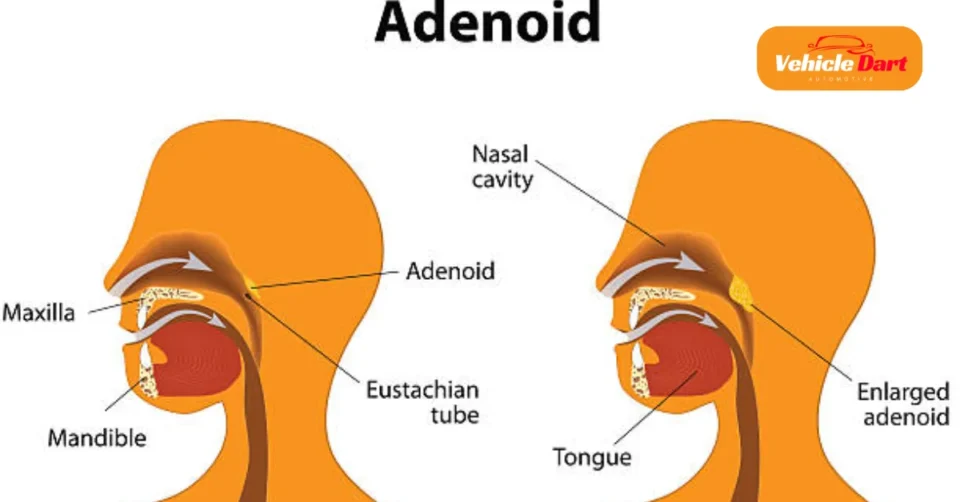Introduction to Adenoidid
Adenoidid might not be a term you hear every day, but it can significantly impact the lives of those affected. These small masses of lymphatic tissue reside just behind the nose and play a role in our immune system. When they become inflamed or infected, it leads to Adenoidid—a condition that often goes unnoticed until symptoms cause concern.
Many parents may find themselves puzzled by their child’s persistent nasal congestion, snoring, or frequent ear infections. Understanding Adenoidid is essential for identifying these issues early on and seeking appropriate care. In this article, we will explore the ins and outs of Adenoidid: its symptoms, causes, diagnosis methods, treatment options, and ways to manage this condition effectively. Whether you’re a concerned parent or someone looking for information about your health journey, there’s something valuable here for everyone. Let’s dive into the world of adenoids!
Symptoms of Adenoidid
Adenoidid often presents with a variety of noticeable symptoms. One common sign is persistent nasal congestion, which can make breathing difficult, especially during sleep.
Children may also experience frequent sinus infections or colds. This occurs because enlarged adenoids can trap bacteria and viruses in the nasal passages.
Another symptom to watch for is snoring. Enlarged adenoids can obstruct airflow at night, leading to noisy breathing while sleeping.
In some cases, individuals may complain of ear pain or recurrent ear infections due to pressure changes in the Eustachian tubes caused by swelling.
Additionally, you might notice a change in voice quality; it could sound more nasal as air struggles to pass through an obstructed airway. Keeping an eye on these signs ensures timely attention and care for those affected by this condition.
Causes and Risk Factors
Adenoidid primarily arises from infections. Viral and bacterial pathogens are common culprits, leading to inflammation of the adenoids. Children are particularly susceptible due to their developing immune systems.
Environmental factors also play a role in the onset of Adenoidid. Allergens like dust mites, pollen, and mold can irritate the nasal passages, contributing to swelling in the adenoids. Exposure to tobacco smoke further exacerbates this condition.
Age is another significant factor; children between 1 and 6 years old are at higher risk as their adenoids tend to be larger during early development. Genetic predispositions may influence susceptibility as well.
Frequent respiratory infections can increase vulnerability too. A history of chronic sinusitis or allergies heightens chances for repeated bouts of Adenoidid. Understanding these causes helps in identifying effective prevention methods tailored for each individual.
Diagnosis of Adenoidid
Diagnosing Adenoidid begins with a thorough medical history. Physicians often ask about symptoms, frequency of infections, and any related health issues.
A physical examination follows. Doctors typically use an otoscope or a nasal endoscope to visualize the adenoids directly. This helps in determining their size and condition.
In some cases, imaging tests like X-rays may be recommended. These can provide additional insights into the severity of inflammation or enlargement.
Allergy tests might also come into play if allergies are suspected as underlying factors.
Diagnosing Adenoidid is a collaborative process between patient and healthcare provider, ensuring that all potential causes are explored thoroughly before moving on to treatment options.
Treatment Options for Adenoidid
Treatment for Adenoidid often starts with conservative methods. Doctors might suggest non-prescription painkillers to reduce discomfort, while warm saltwater gargles can bring calming relief. If the condition continues, antibiotics may be given when a bacterial infection is likely. These medications help fight off the infection and promote quicker recovery.
For chronic cases, where other treatments fail, surgery could be an option. Adenoid removal, known as adenoidectomy, is typically considered when infections are frequent or severe.
Post-surgery care is crucial for healing. Staying hydrated and avoiding irritants like smoke can aid recovery significantly.
Regular follow-ups with healthcare professionals ensure that any complications are managed promptly and effectively. Each treatment plan should always be tailored to individual needs for optimal results.
Prevention and Management of Adenoidid
Preventing Adenoidid starts with good hygiene practices. Encourage regular handwashing, especially before meals and after playtime. This simple habit helps reduce the spread of germs that can cause infections.
Staying away from secondhand smoke is crucial too. Exposure to smoke irritates the airways and raises the risk of respiratory problems, often triggering adenoid swelling.
For children prone to recurrent infections, consider discussing dietary habits with a healthcare professional. A balanced diet rich in vitamins supports immune health and may help ward off illnesses.
Regular check-ups are important as well. Routine visits allow for monitoring any signs of adenoidal enlargement or infection early on, enabling prompt intervention if necessary.
Managing allergies effectively can also minimize risks. Utilizing appropriate medications or avoiding triggers may prevent excessive mucus production and subsequent irritation in the throat area.
Conclusion
Adenoidid can significantly impact quality of life, especially for children. Understanding its symptoms is crucial for timely intervention. If your child exhibits signs such as chronic nasal congestion, frequent ear infections, or persistent cough, it’s important to consult a healthcare professional.
Diagnosis typically involves a physical examination and may include imaging tests to ascertain the condition’s severity. Early detection can lead to more effective treatment options.
The approach to treatment changes based on how severe the Adenoidid. While many cases resolve with conservative measures like antibiotics or nasal steroids, some might require surgical intervention if complications arise.
Preventing Adenoidid often revolves around maintaining good hygiene and managing allergies effectively. Regular check-ups can also help in early identification and management of potential issues.
Understanding Adenoidid empowers parents and caregivers to take proactive steps towards their child’s health. By recognizing symptoms early and seeking appropriate care, you can ensure better outcomes for those affected by this condition.

